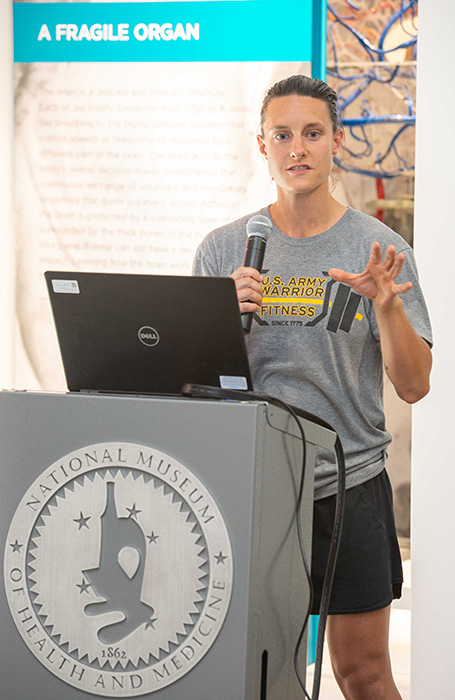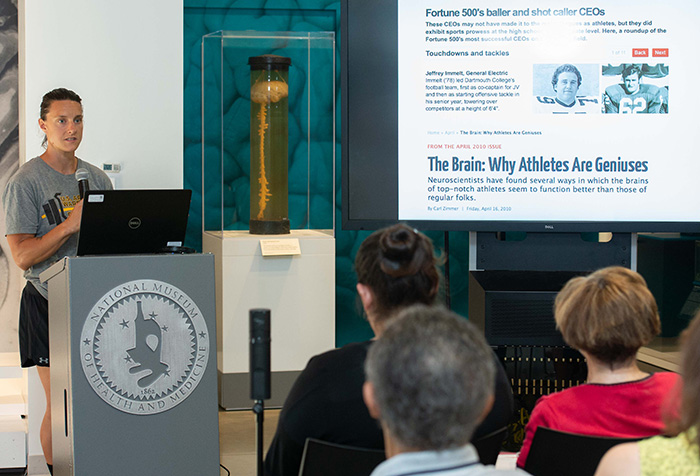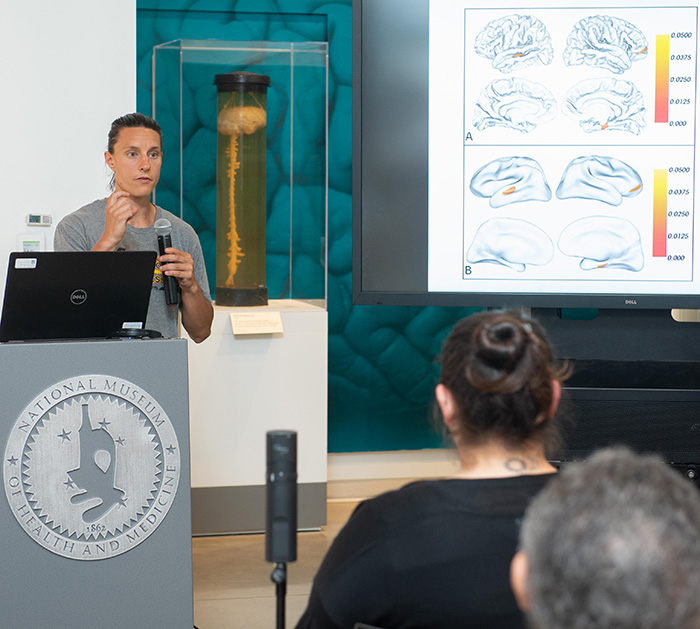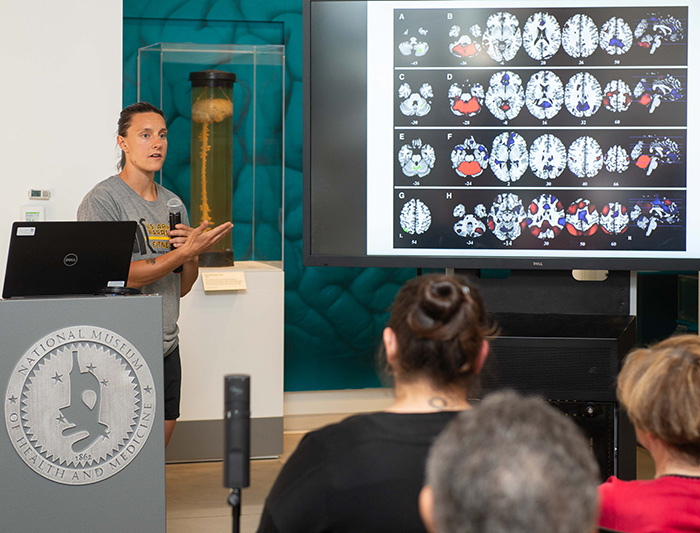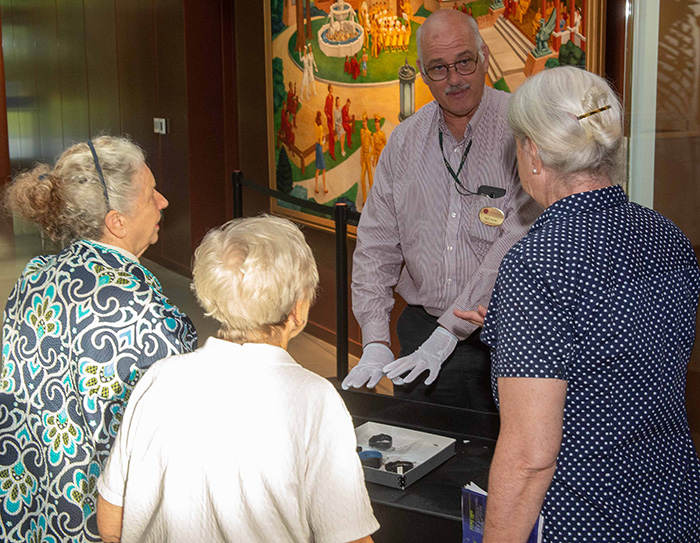Neuroscience Shows Elite Athlete and Soldier Brains Perform at Higher Level
By Jacqueline Gase
NMHM Public Affairs Coordinator

U.S. Army Capt. Allison Brager identifies the different regions of the brain during the June 25, 2019, Medical Museum Science Café titled "The Neuroscience of Elite Performance" at the National Museum of Health and Medicine in Silver Spring, Maryland. (Department of Defense photo by Matthew Breitbart)
Audience members at the National Museum of Health and Medicine's June 25, 2019, Medical Museum Science Café titled "The Neuroscience of Elite Performance" were left debating whether the brains of elite athletes and soldiers are unique due to genetic markers or if greater aptitude is acquired through practice. U.S. Army Capt. Allison Brager, identifying the parallels between athletes and soldiers, shared studies about the differences in brain activity between amateur and elite athletes, which highlighted the increased mental performance of professionals.
Brager began her presentation by discussing how each region of the brain functions in terms of the attributes of a soldier or athlete. Sensation, motion, memory, sight, and intelligence are elements that correspond to a specific region of the brain and help an athlete process actions and decisions in game play.
Detailing the connections of these attributes visually, Brager exhibited the "Brainbow." The Brainbow, developed by scientists at Harvard University, shows the biological structures and proteins of a slice of a brain and illustrates the connections between each region. In the research into athletes, "the size of the surface area [of the connections] expands. There's a greater connection between each of the nerve cells and greater surface area of the brain devoted towards a particular task," said Brager.
Brager explained this phenomenon by showing a Chinese study that viewed the brains of performing expert and amateur divers in real-time. The study found that the brains of expert divers used greater surface area and more connections in the motion and reward regions of the brain.
The second study Brager identified focused on the brain at an idle state. The results of this study of amateur and professional badminton players in China are similar to those of the study done with divers in motion.
In a neuroimaging graph of the badminton novices and elites, "you see differences in the cerebellum, which is important for motion. You see differences in the frontal parts of the brain where all the decision making and risk taking is occurring. And you see differences in the emotional parts of the brain as well as the parts of the brain mediating the connection between how the body is moving in time and space and how that information is integrated within the brain," said Brager.
Between these studies, Brager emphasized the difference between high athletic performers and novices, concluding that practice and experience impact brain chemistry positively. However, Brager acknowledged that genetic upbringing could also have a hand in the neuroscience of elite athletes and soldiers.
Ongoing research at the Defense Advanced Research Projects Agency (DARPA) studies genetic or bio markers in athletes and soldiers. Focusing on mental attributes, DARPA hopes to determine if some people are genetically programmed to perform at a higher level than others.
Brager likened these studies at DARPA to those at the Walter Reed Army Institute of Research Sleep Research Center where genetic markers are used to identify soldiers who are more resilient to sleep deprivation.
After the lecture, our museum's Historical Collections Manager Alan Hawk displayed the evolution of sleep monitoring equipment that the Sleep Research Center has used for these studies. With physiologic wrist monitors, the researchers concluded that sleep could be banked and that extended nighttime sleep protects against performance deficits in a subsequent week of sleep deprivation.
"Medical readiness is a top priority for the military," stated Andrea Schierkolk, NMHM public programs manager. "Capt. Brager's research contributes to the body of knowledge that explores natural abilities versus abilities developed through a rigorous training process, which allows for greater achievement in resource management," she said.
The museum's public programs provide forums for informal learning that connect the mission of the Department of Defense museum with the public. For more information about upcoming events, call (301) 319-3303 or visit https://www.medicalmuseum.mil.
